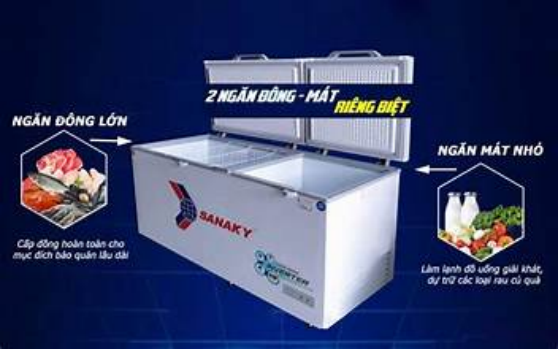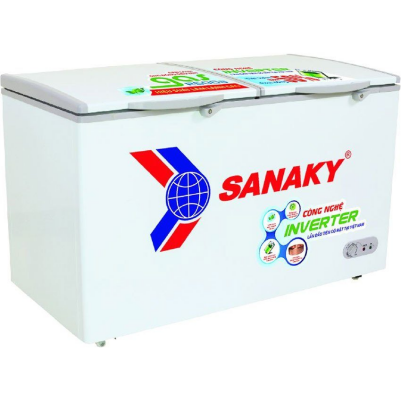The freezer and refrigerator market in China has experienced significant transformations over the past few decades, driven by rapid urbanization, rising disposable incomes, and shifting consumer preferences. As one of the world's largest producers and consumers of household appliances, China plays a pivotal role in the global refrigeration industry. This article explores the dynamics of the Chinese freezer and refrigerator market, highlighting key trends, major players, growth drivers, and future opportunities.
Market Overview
In 2024, the Chinese refrigerator and freezer market was valued at approximately $15.7 billion, reflecting a decrease of 12.5% from the previous year due to market saturation and economic challenges. Despite this, the market is projected to grow at a compound annual growth rate (CAGR) of 2.6% from 2024 to 2035, reaching a market volume of 148 million units and a value of $20.9 billion by 2035. Household refrigerators dominate consumption, accounting for 73% of the total volume, with combined refrigerator-freezers making up a significant portion as well.
China's dominance in this sector is not limited to domestic consumption. The country is the world's largest exporter of refrigerators and freezers, with exports reaching the United States, Japan, and South Korea as primary destinations. In 2024, China accounted for a substantial share of global exports, driven by its robust manufacturing capabilities and competitive pricing.
Key Drivers of Market Growth
Several factors contribute to the growth of the freezer and refrigerator market in China:
1. Urbanization and Rising Disposable Income
China's rapid urbanization has led to increased demand for modern household appliances, including refrigerators and freezers. As more people move to cities, smaller living spaces have fueled the popularity of compact and space-efficient refrigeration units. Additionally, rising disposable incomes have enabled consumers to invest in high-end, energy-efficient models with smart features.
2. Growing Demand for Frozen and Convenience Foods
The shift toward convenience-oriented lifestyles has boosted the demand for frozen foods, such as ready-to-eat meals, frozen vegetables, and snacks. Brands like Nestlé and Conagra have expanded their frozen food lines, necessitating advanced refrigeration solutions with larger freezer compartments and multi-zone cooling. This trend has driven innovation in refrigerator design to cater to evolving consumer needs.

3. E-commerce and Online Sales
E-commerce has revolutionized the way refrigerators and freezers are sold in China. In 2023, online shops accounted for approximately 54% of industry revenue, reflecting a shift from traditional retail to digital platforms. Online channels offer competitive pricing and convenience, making them a preferred choice for consumers.
4. Replacement Demand
With refrigerator ownership reaching saturation—104.2 units per 100 urban households and 105.7 units per 100 rural households in 2023—replacement demand is becoming a significant growth driver. As older appliances reach the end of their lifespan, consumers are opting for energy-efficient and technologically advanced models.
5. Energy Efficiency and Smart Technology
Government initiatives promoting energy-efficient appliances have encouraged manufacturers to develop eco-friendly refrigerators. The integration of Internet of Things (IoT) technology, allowing remote monitoring and temperature control, has further enhanced consumer appeal. For instance, Samsung’s 4-Door Flex series and LG’s MoodUP refrigerator with color-changing LED panels exemplify the trend toward smart, user-friendly appliances.
Major Players in the Chinese Market
The Chinese refrigerator and freezer market is highly concentrated, with the top four enterprises accounting for over 70% of industry revenue. Key players include:
- Hisense: A leading manufacturer, Hisense acquired Kelon in 2006 and produces refrigerators under the Kelon and Ronshen brands. It is renowned for its focus on energy efficiency and smart technology.
- Meiling: Based in Hefei, Meiling is known for its energy-saving and high-end refrigerator models, such as the Athena series and ultra-low-temperature freezers.
- Xinfei (Frestech): A prominent green appliance brand, Xinfei specializes in refrigerators and freezers with a strong domestic market presence.
- Guangzhou Wanbao: One of China’s largest refrigeration equipment manufacturers, Wanbao produces a wide range of refrigerators and compressors, partnering with global companies like Panasonic and GE.
- Midea: A major player in the household appliance sector, Midea ranks among the top three in refrigerator sales in China.
- International Brands: Global giants like Samsung, LG, Siemens, Panasonic, and Electrolux also have a significant presence, offering premium and customized refrigeration solutions.
Market Challenges
Despite its growth potential, the Chinese refrigerator and freezer market faces several challenges:
1.Market Saturation: With nearly universal refrigerator ownership in urban and rural households, new purchases are declining, and replacement demand is becoming the primary growth driver.
2.Economic Fluctuations: The market experienced a downturn in 2024 due to weak domestic demand and a slowdown in the real estate sector, which affects new household formations.
3.Environmental Regulations: Stricter regulations on energy consumption and greenhouse gas emissions are pushing manufacturers to innovate, increasing production costs.
4.Competition: Intense competition among domestic and international brands requires continuous investment in research and development to stay ahead.
Emerging Trends
Several trends are shaping the future of the freezer and refrigerator market in China:
1. Smart and AI-Based Refrigerators
The adoption of smart technology is transforming the refrigeration industry. Features like automatic temperature control, in-built screens, and AI-based diagnostics are gaining popularity. These innovations enhance energy efficiency and user convenience, appealing to tech-savvy consumers.
2. Compact and Built-In Models
As urban living spaces shrink, compact and built-in refrigerators are becoming more popular. Built-in models, which integrate seamlessly with modular kitchens, are projected to grow at a CAGR of 5.2% through 2030.
3. Focus on Sustainability
Manufacturers are prioritizing eco-friendly refrigerants and energy-efficient designs to comply with global environmental standards. This aligns with consumer demand for sustainable appliances that reduce electricity costs.
4. Customization
Brands like LG and Samsung are introducing customizable refrigerators, such as models with interchangeable door panels, to cater to aesthetic preferences.

Export Opportunities
China’s position as a global manufacturing hub provides significant export opportunities. In 2024, the United States was the largest destination for Chinese refrigerator and freezer exports, followed by Japan and South Korea. The country’s ability to produce high-quality appliances at competitive prices ensures its dominance in the global market. However, fluctuations in export prices and trade restrictions pose challenges.
Future Outlook
The Chinese freezer and refrigerator market is poised for steady growth, driven by technological advancements, replacement demand, and export potential. The focus on high-end, energy-efficient, and smart appliances will likely sustain consumer interest. Additionally, the expansion of e-commerce and the growing popularity of frozen foods will further bolster market growth.
To capitalize on these opportunities, manufacturers must invest in innovation, prioritize sustainability, and adapt to changing consumer preferences. As China continues to lead the global refrigeration industry, its market will remain a critical area of focus for both domestic and international players.
Conclusion
The freezer and refrigerator market in China is a dynamic and evolving sector, shaped by economic, technological, and cultural factors. Despite challenges like market saturation and economic downturns, the industry’s long-term outlook remains positive, with a projected market value of $20.9 billion by 2035. By leveraging smart technology, sustainable practices, and robust export strategies, China is well-positioned to maintain its dominance in the global refrigeration market. Whether you’re a consumer, investor, or manufacturer, understanding the trends and opportunities in this market is essential for staying ahead in this competitive landscape.
--------------------------------------------------------------------------------------------------------------
SANAKY VIETNAM., CO LTD - Manufacturer of Chest Freezer - Upright Cooler, Transformer, RO Water Purifier...
Website: www.sanaky-vn.com
Hotline: (+84) 986123903
 Vietnamese
Vietnamese  English
English  Chinese
Chinese  French
French  Spanish
Spanish  Russian
Russian  Arabic
Arabic  Portuguese
Portuguese